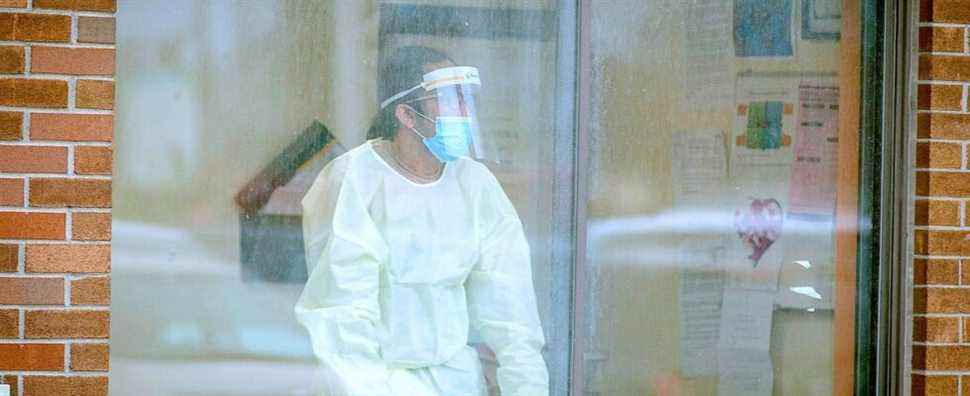Respiratory distress protocols do not cause death, insisted Dr. Marjorie Tremblay, Tuesday, during her visit to the hearings of coroner Géhane Kamel on the deaths of elderly or vulnerable people that occurred in residential settings during the first wave of COVID-19.
On Monday, Dr. Vinh-Kim Nguyen, who worked in a CHSLD during this period, described these treatments as “euthanasia” during his testimony. This sentiment echoed concerns expressed by various witnesses in previous sessions.
It was Dr. Tremblay, a specialist in palliative care, who developed the protocol used at the CISSS de Laval, and which was then taken up in many other Quebec establishments during the crisis. For her commitment to the fight against COVID-19, she received a medal from the National Assembly.
It is simply a mixture of drugs given to patients at the end of their life in order to alleviate their suffering, she explained. They are used, among other things, to “control breathing rate”, “manage anxiety”, “change consciousness” and “prevent and control groans”, and can be removed if the patient recovers.
In the case of COVID-19, these treatments also “reduced the risk of contamination”, since they calmed the cough.
“We have to stop thinking that morphine kills,” she said. It was COVID that killed the patients. “
Crisis situation
The framework set up by Dr. Tremblay called for a continuous assessment of the patient’s condition according to several criteria and the supervision of a physician.
The coroner’s assessor, Dr. Jacques Ramsay, has expressed concerns about adherence to these guidelines in a crisis situation. The monitored symptoms “resemble those of dehydration,” he argued. “Your protocol involves a medical presence, which was not always necessarily in place. We could have gone over the cases of dehydration ”, which would however have been easily resolved.
Since the respiratory distress protocol does not cure the disease itself, it should only be given to patients whose records prescribed lower levels of care, by refusal of aggressive therapy.
Coroner Kamel, however, recalled that “the levels of care were reviewed, in most cases hastily,” at the start of the crisis.
During previous sessions, several witnesses had said that the CHSLDs had telephoned the families of residents to convince them to lower the level of care for their loved one, often without explaining in depth the consequences of such a choice.
“You put in premises that are very important,” the coroner told Dr. Tremblay, “taking for granted that families were involved, that levels of care were reviewed” appropriately. But in the field, “the doctors were not present for the most part” and the families no longer had access to the residences.
She strongly suggested tightening up “the prerequisites for using these protocols”.
The context of the investigation
The coroner’s inquest is looking into the deaths of elderly or vulnerable people who have occurred in residential settings during the COVID-19 pandemic.
During this period, from February 25 to July 11, 2020, Quebecers aged 70 and over accounted for 92% of deaths from COVID-19, according to data from the Institut national de santé publique du Québec.
Its objective is not to identify a culprit, but to formulate recommendations to avoid future tragedies.
Six CHSLDs and a retirement home were designated as a sample. One death was examined for each establishment. Since Monday, the coroner has been looking into the provincial management of the crisis.
